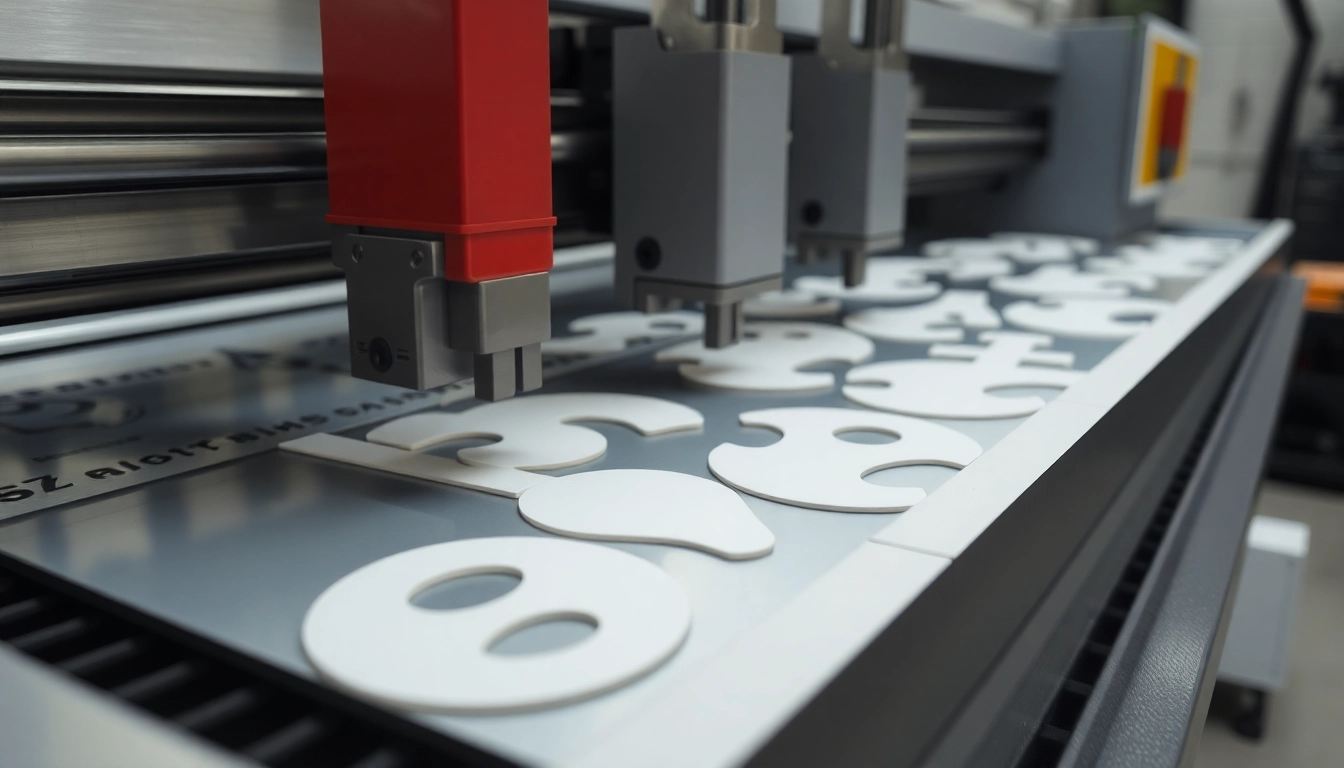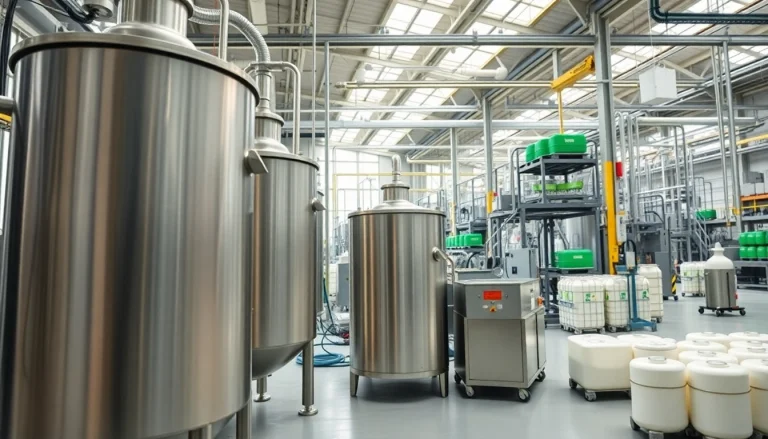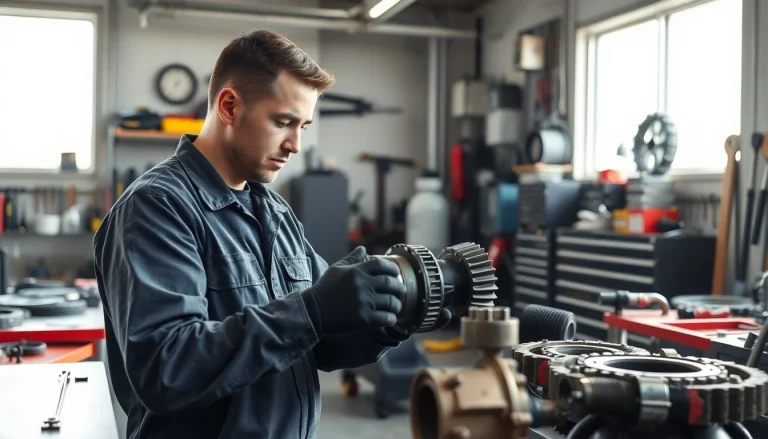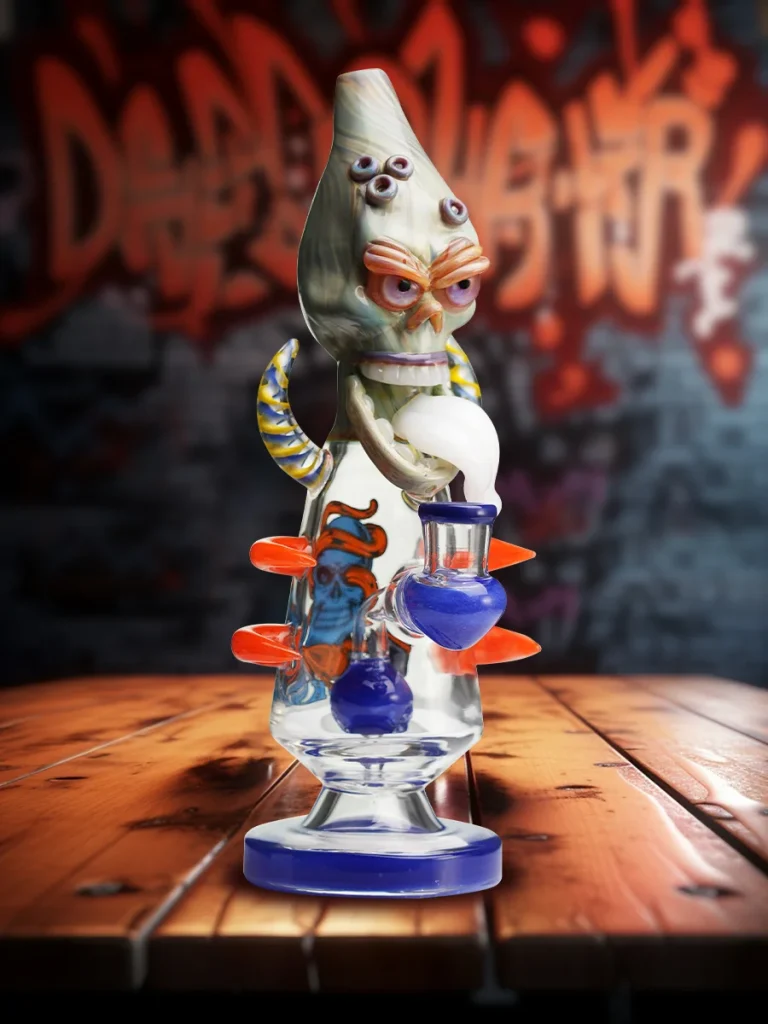Understanding Precision Die Cutting
The Fundamentals of Precision Die Cutting
Precision die cutting is a manufacturing process that involves cutting materials into specific shapes and designs using a sharp die. This method is highly regarded for its accuracy and efficiency, making it a preferred choice in various industries. The die used in this process is pre-shaped to achieve the desired outcome, often integrating multiple functionalities such as perforation, scoring, and complex contours. By utilizing techniques like rotary die cutting or flatbed die cutting, manufacturers can produce components that meet stringent tolerances and specifications.
At its core, precision die cutting allows manufacturers to convert sheets or rolls of material into finished products with minimal waste and maximum repeatability. This process is essential for creating components that need to be precise in dimensions and fit during assembly, ensuring that the final product performs as intended. Precision die cutting is not just about cutting; it’s about delivering quality, speed, and efficiency.
Benefits of Precision Die Cutting in Manufacturing
The advantages of precision die cutting are manifold, especially when compared to traditional cutting methods. Some key benefits include:
- High Precision: With advanced die technology, manufacturers can cut materials to exact specifications, ensuring quality control and reducing errors.
- Versatility: Precision die cutting can handle various materials, including paper, gaskets, foams, plastics, and even metals, providing flexibility for different applications.
- Efficiency: This method allows for rapid production runs, significantly decreasing lead times and increasing throughput in manufacturing environments.
- Cost-Effectiveness: By minimizing material waste and maximizing output, companies can achieve better cost efficiency in their production processes.
- Customization: Precision die cutting supports intricate designs and custom shapes, enabling manufacturers to meet specific client needs and market demands.
Types of Materials Suitable for Precision Die Cutting
Precision die cutting is applicable to a broad range of materials, enhancing its utility across different sectors. Here are some materials commonly used:
- Paper and Cardstock: Widely utilized in packaging and graphic arts.
- Plastics: Such as PET, PVC, and polycarbonate, often used in electronics and packaging.
- Foams: Including polyurethane and polyethylene foams, crucial for cushioning and insulation components.
- Metals: Thin gauges of steel or aluminum for various industrial applications.
- Adhesives: Cut to custom specifications for assembly and bonding needs.
Applications of Precision Die Cutting
Industries Utilizing Precision Die Cutting
The versatility of precision die cutting allows it to serve multiple industries effectively. Here are some significant sectors employing this technology:
- Automotive: Used for producing gaskets, insulation, and interior components with precise specifications.
- Electronics: Essential for creating parts like insulators, gaskets, and protective components.
- Medical Devices: Utilized in the production of custom-shaped components that may involve regulated materials and require high precision.
- Packaging: Employed in the creation of packaging materials that are attractive yet functional, helping products stand out on shelves.
- Consumer Goods: Commonly found in the production of items such as toys, clothing, and household products that require unique shapes and designs.
Case Studies: Success Stories with Precision Die Cutting
Real-world applications provide insights into the value of precision die cutting. Here are a few case studies that exemplify its impact:
1. Automotive Industry
An automotive manufacturer faced challenges with component tolerances leading to assembly issues. By incorporating precision die cutting, they redesigned several components, reducing assembly time by 30% without sacrificing quality.
2. Electronics
A leading electronics firm needed custom insulators for its products but struggled with the variability of traditional cutting methods. Transitioning to precision die cutting not only met their design specifications but also enhanced material utilization by 20%, translating into cost savings.
3. Medical Devices
A medical device company focusing on surgical tools required precise components that adhered to strict regulations. They utilized precision die cutting to achieve consistent quality, ultimately aiding in speeding up their time-to-market for new products by 45%.
Innovative Uses of Precision Die Cutting in Custom Projects
Innovation thrives in various sectors through the creative application of precision die cutting. Noteworthy examples include:
- Custom Packaging Solutions: Brands are utilizing die cutting to design unique box shapes and features that enhance customer experience.
- Art and Design Projects: Artists leverage die cutting technology to create intricate designs and patterns in their work, making art installations more dynamic.
- Prototyping: Rapid prototyping in the start-up sector can benefit from precision die cutting for producing fast, detailed prototypes of products before mass production.
Choosing a Precision Die Cutting Service Provider
What to Look for in a Die Cutting Company
Selecting the right precision die cutting service is crucial for ensuring quality, efficiency, and support. Consider the following factors:
- Experience and Expertise: Look for a company with a proven track record in your industry, showcasing knowledge and capabilities relevant to your specific needs.
- Technology and Equipment: Ensure the provider uses state-of-the-art machinery and techniques that align with modern precision die cutting standards.
- Customer Service: Choose a company that offers comprehensive support, from initial inquiries through to after-sales service, ensuring an engaging partnership.
- Quality Assurance: Investigate their quality control practices to ascertain they can consistently deliver products that meet your specifications.
Evaluating Quality and Turnaround Time
Quality and turnaround times are pivotal in assessing precision die cutting services. Here are steps to ensure you make the right evaluation:
- Request Samples: Before committing, ask for samples of their previous work to evaluate the quality and standards.
- Understand Lead Times: Inquire about their standard turnaround times and their capability to accommodate rush orders when necessary.
- Production Processes: Learn about their die cutting methods (e.g., rotary vs. flatbed) and how that impacts quality and speed.
- Client Testimonials: Seek feedback from past clients regarding their experiences with quality and service to get a more holistic view.
Comparing Costs and Services Across Providers
Cost is often a decisive factor, but it should not be the only consideration. Here are tips for assessing costs effectively:
- Obtain Quotes: Get detailed quotes from multiple companies, ensuring you understand what is included in the price.
- Analyze Value: Consider the value offered along with the cost—rushing to choose the cheapest option can often lead to compromising quality.
- Evaluate Long-term Partnerships: Consider companies that offer long-term benefits such as discounts for repeat business or better rates on bulk orders.
Best Practices for Precision Die Cutting
Design Considerations for Precision Die Cutting
Successful precision die cutting begins with careful design planning. Here are essential design considerations:
- Material Selection: Understand how different materials respond to the die cutting process and choose accordingly.
- Tolerance Levels: Define the tolerances required for each cut part, paying close attention to how these tolerances impact assembly and functionality.
- Cutting Patterns: Optimize cutting patterns to minimize waste and ensure the integrity of delicate designs.
Maintaining Tolerances in Die Cut Parts
Maintaining precision tolerances is critical in ensuring that die-cut parts fit and function correctly in their applications. To achieve this:
- Regular Calibration: Ensure that machines and dies are regularly calibrated and maintained, minimizing wear that can introduce inaccuracies.
- Quality Inspections: Implement strict quality assurance measures that include inspections at multiple stages of production.
- Feedback Loop: Establish a feedback system where production issues are communicated back to design teams to adjust specifications appropriately.
Optimizing Processes for Efficiency and Quality
Streamlining operations is essential for maximizing productivity in precision die cutting. Consider these optimization strategies:
- Process Automation: Invest in automation where feasible to reduce manual errors and speed up production.
- Data Analytics: Utilize data analytics to monitor production performance, identifying bottlenecks and areas for improvement.
- Worker Training: Regular training of staff on the latest techniques and safety protocols can enhance efficiency and quality.
The Future of Precision Die Cutting
Technological Advances in Die Cutting Machinery
As technology continues to evolve, so does precision die cutting. Advancements include:
- Laser Die Cutting: This technology allows for more intricate and precise cuts compared to traditional methods, reducing setup times and offering increased material versatility.
- 3D Die Cutting: Emerging techniques that allow for cuts in three dimensions are opening new possibilities for product design and functionality.
- Sustainability Features: Modern machinery increasingly incorporates eco-friendly technology that helps reduce waste and energy consumption.
Sustainability Trends in Precision Die Cutting
With growing concerns over environmental impact, sustainability is becoming a focal point in precision die cutting. Key trends include:
- Recyclable Materials: Many manufacturers are sourcing materials that can be easily recycled, minimizing waste in the production lifecycle.
- Energy-efficient Operations: Companies are investing in machines that consume less energy and optimize resource use during production.
- Green Certifications: More businesses are seeking certifications that highlight their commitment to sustainable practices, which can also enhance brand image.
Predictions for Market Growth and Innovations
Looking ahead, the precision die cutting market is expected to grow significantly due to:
- Increased demand for custom products across various sectors.
- Technological advancements that enhance efficiency and capabilities.
- Shift towards sustainable practices that align with consumer expectations.
- Growth in e-commerce requiring novel packaging solutions.








